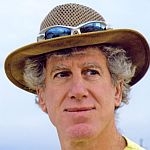 (HOST) This Presidents’ Day, commentator Ted Levin is thinking about the legacy of Teddy Roosevelt, as told in the book, "The Wilderness Warrior: Theodore Roosevelt and the Crusade for America" by Douglas Brinkley.
(HOST) This Presidents’ Day, commentator Ted Levin is thinking about the legacy of Teddy Roosevelt, as told in the book, "The Wilderness Warrior: Theodore Roosevelt and the Crusade for America" by Douglas Brinkley.
(LEVIN) Since April 30th, 1789, the United States has had 44 presidents, of which only one, Theodore Roosevelt was an unflinching naturalist. For seven-and-a-half years he kept a list of birds he saw on the White House grounds and regularly corresponded (and dined) with naturalists and field biologists – including John Burroughs, John Muir, and George Bird Grinnell, founder of the National Audubon Society – with whom he shared observations and argued arcane points of taxonomy. While president, Roosevelt wrote and edited books on big game hunting filled with original and detailed natural history observations and digressions into the evolution of morphology and behavior; he was a world authority on mountain lions and wolves. Charles Darwin, John James Audubon, George Perkins Marsh and Roosevelt’s uncle Rob, founder of the Isaac Walton League, were his heroes.
Wherever Roosevelt traveled, which he did extensively in some of the most god-forsaken corners of the country, he collected specimens for the Smithsonian Institution, the American Museum of Natural History, and the Chicago Field Museum. He was a patriotic booster of everything American, particularly landscape and wildlife, which like an Iroquois elder he believed were the birthright of the unborn.
To that end, on June 6, 1906, Theodore Roosevelt signed into law "An Act for the Preservation of American Antiquities." This act allowed the president to designate "historical landmarks, preservation structures, and other objects of scientific interest" as national monuments. Without having to consult congress, Roosevelt had at his disposal a law that enabled him to preserve "national treasures."
Armed with the Antiquities Act Roosevelt was unstoppable. To the chagrin of tin and asbestos mining companies he declared the Grand Canyon a national monument.
The redwood grove bordering Stinson Beach north of San Francisco become Muir Woods National Monument, a green cathedral of two-hundred foot tall evergreens that rise from narrow, fog-filled valleys that dent the West Coast like the crimped edge of a pie crust. Washington state’s Mount Olympus, Lassen Peak in the Sierras, the Gila Cliff Dwellings, the Petrified Forest, and Devils Tower among numerous other sites became national monuments. Mesa Verde, the Dry Tortugas, Wind Cave, and Crater Lake became national parks.
By the time Theodore Roosevelt left office he had created 51 bird reservations and four national game preserves, which collectively began the National Wildlife Refuge System; he declared 150 national forests, six national parks, and 18 national monuments. After co-founding the Boone and Crockett Club and the New York Zoological Society, Roosevelt championed the Bronx Zoo, which became a breeding site for endangered species. Zoo-bred bison were reintroduced to portion of the West on his watch.
All told, TR set aside 234 million acres of wild America for posterity.
And on the day that President William McKinley was mortally wounded in a Buffalo, New York train station, then-Vice President Theodore Roosevelt was in Vermont.
He was here to study the state’s game laws, which at the time were by far the most progressive in the nation.